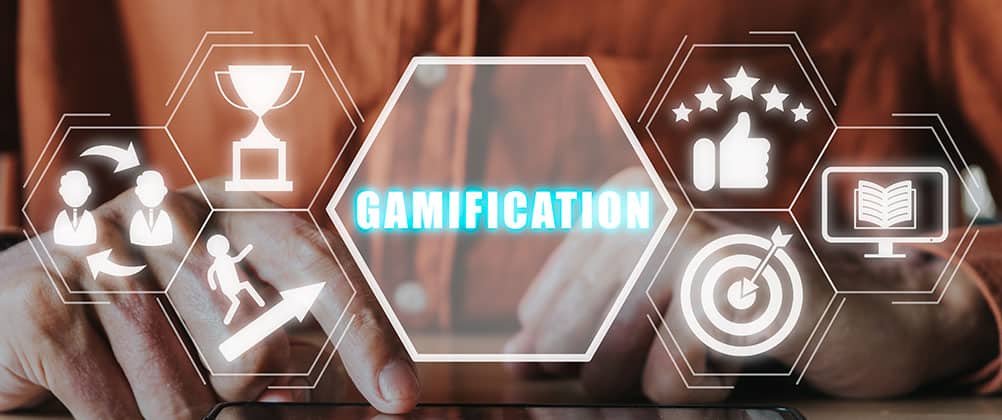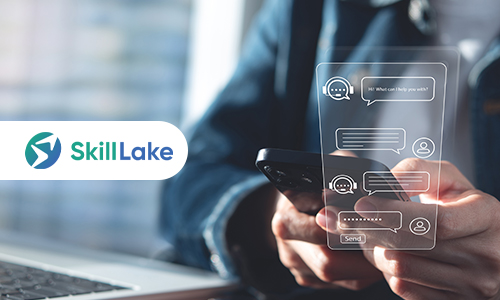Gamification in Corporate Training: Amplifying the Impact of Your Learning Initiatives

Gamification in corporate training has been around since its inception in 2011. This alternative method to traditional eLearning provides learners with an exciting and immersive learning experience. Learners may be engaged and motivated when you gamify learning by utilizing gaming concepts, components, and new tactics.
The gamification market has been growing from $7.8 billion in 2019 to a predicted $76.3 billion by 2030. Gamification has emerged as a critical tool for businesses to engage, train, reward, and retain learners. While gamification was formerly limited to HR needs like onboarding and training, it has now spread to other departments and is considered beneficial in boosting sales, customer service, and marketing activities.
Read more: Regulating On-the-Job Training and How People Development is the Answer
How gamification impacts corporate learning
1. What do learners gain? (From the learner’s perspective).
The widespread use of mobile learning or mLearning has enabled eLearning to be provided on the devices of learners’ choice. The worldwide eLearning sector was worth $107 billion in 2015 and is expected to increase to $325 billion by 2025. The way eLearning solutions get developed is also changing dramatically. Microlearning is increasingly being used in current solutions, as is the substantial use of videos and social learning. These aspects indicate a clear opportunity to deliver gamification on mobile devices in formats that can be appealing to learners, resulting in increased retention and application.
2. What do businesses gain? (The business perspective).
While gamification in learning has always piqued the interest of the learner community, corporates have been cautious in adopting it on a large scale. That is not the case anymore! Several case studies show that gamification (for serious learning) results in:
- High-intensity training
- Efficacious on-the-job application
3. Maturing of tools and tech supporting gamification-based solutions.
This is a big driver, and it is now much simpler to design successful gamification solutions due to the maturing of mobile learning authoring tools.
- The availability of several gamification platforms from which to select
- Gamification support in Learning Management Systems
4. High-impact learning solutions
The learner engagement quotient is much higher when gamification technology in education gets used effectively. It enables companies to push learners, encourage them to give their best since there are benefits for doing so, provide variation, and make full use of the community aspect and healthy rivalry among learner groups. A well-designed gamification system that considers learner interests will increase learner engagement and information retention. This, in turn, leads to improved performance, greater application of learning, and fulfillment of an organization’s expectations of its workforce and the learning project.
Read more: Effective Training For Your Remote Workforce – The Guide
Ways gamification benefits corporate or professional training
Successful games incorporate elements of play and psychology. When you integrate brief, discrete puzzle-solving with a rewards system and progress meters, gamification as a learning tool can help capture and retain user attention. Trainees may access fresh objectives and move up leader boards by going through levels, generating further engagement. Gamified online learning can benefit both the company and its learners by boosting:
1. Participation
Gamification makes information more enjoyable and intriguing. For students who need to master crucial topics, gamification can help make studying more entertaining.
2. Motivation
Students are encouraged to acquire specific ideas and theories using motivational strategies such as challenges and prizes. They are more motivated to succeed if the material to them in this manner.
3. Attention Span
As previously stated, for learners to sit in front of a computer for hours and pay attention to what is getting taught, instructors must “mix it up” a little. Incorporating gamification in virtual learning for ideas encourages pupils to pay closer attention to what they are studying. Learners’ attention spans are greater, whether for finishing a task or desire.
4. Rate of Information Retention
The larger the attention span, the higher the students’ chances of remembering what gets taught. Learners tend to recall information better when delivered in a gamified style, whether as an encouragement to do better or a reward.
5. Feedback
Immediate feedback is a vital element in gamification training examples. It is no secret that immediate and positive feedback can boost self-esteem and engagement in the learning process.
Read more: The Essential Guide to Choosing the Best LMS Software for your Organization
How Skill Lake utilizes gamification and microlearning to aid organizations
Every year, firms worldwide spend over 370 billion dollars on learning and development. With such an expenditure, L&D professionals are under pressure to choose training approaches that provide a measurable return on investment. As a result, many businesses have adopted techniques such as gamification in online learning and microlearning.
Skill Lake’s overall learning retention is higher than other learning frameworks. With Skill Lake, examinations and assessments can be assigned so that mentors can track and evaluate knowledge retention. Gamification is used in Skill Lake to make learning more enjoyable. The framework appearing to the learner is similar to a gaming ecosystem, with “virtual awards attained at specified milestones.” The gamification of learning achieved via information mashups or the creation of “directed assessments” can all be used to prod learners to attain learning objectives. Gamification in LMS allows you to seamlessly incorporate levels into eLearning and thereby, establish precise constraints. Skill Lake provides higher learner engagement, improved accountability, content development and library, learner dashboard, and user administration. These differentiating elements distinguish Skill Lake from the competition since modern employees demand individualized, social learning experiences that help them succeed in their jobs.
With Skill Lake, one can,
- Unlock content-authoring tools that are strong, lightweight, and distraction-free for producing mashups, assessments, and tests.
- Increase employees’ knowledge without interfering with their workflow and encourage them to learn new abilities.
- Create assessments and mashups to assist learners in meeting their learning objectives.
- Make instructional materials available in bite-sized chunks to increase engagement, i.e., microlearning.
- Tailor learning to the pace and individual requirements of each learner.
- Engage and incentivize learners with virtual incentives, badges, and points.
Skill Lake may be the appropriate corporate learning platform your organization is looking for because of the tremendous growth in smartphones and the advent of millennials in the workplace, as the system facilitates anywhere–anytime learning. Skill Lake’s adaptability in delivering personalized learning guarantees that everything remains relevant and focused for your learners.
Take a quick demo to experience the features of Skill Lake LMS.
Build a culture of continuous learning with Skill Lake’s state-of-the-art people development platform. Give your employees professional training to help them excel in their job roles and propel your business to greater efficiency and success.
Start Today

Aarathy Jayakrishnan
Aarathy is an e-learning professional and enthusiast with a keen understanding of learning and development concepts. She writes insightful content, unraveling the possibilities that e-learning holds, and strives to make education open for all.